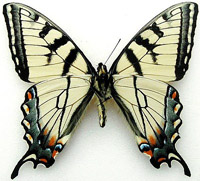Lepidoptera Survey, International

The Taxonomic Report of the International Lepidoptera Survey
Date of this Version
11-18-2019
Document Type
Article
Citation
Taxonomic Report of the International Lepidoptera Survey (November 19, 2019) 8(3): 1-9
Also available at https://lepsurvey.carolinanature.com/ttr/ttr-8-3.pdf
Also available at the Internet Archive, the Biodiversity Heritage Library, and Zobodat
Abstract
The Oeneis melissa (Fabricius, 1775) “neotype” designations of Lukhtanov and Eitschberger (2000; 2001) do not meet several critical requirements of the ICZN and are therefore invalid. In addition, the locality data is too vague to be taxonomically useful, their “neotype” specimen is a specimen of the taxon generally known as O. melissa semplei, and acceptance of their specimen as neotype would change the meaning of the taxon Oeneis melissa. Hence, I reject their neotype designation. A neotype Oeneis melissa (Fabricius, 1775) is designated from Nain, Labrador with careful consideration of the Articles of the International Code of Zoological Nomenclature. The ‘barcode’ mtDNA (CO1 gene) structure for the neotype is provided.
The original number of type specimens of Oeneis polixenes (Fabricius, 1775) is unknown and a holotype was not designated explicitly or through implication; therefore, the type specimens are syntypes. There is one specimen that has been identified as a syntype of O. polixenes in the Natural History Museum in London (formerly the British Museum of Natural History), and no other extant specimens are known. I have expressly and deliberately designated the specimen in the collection of the Natural History Museum in London, as the lectotype of Oeneis polixenes (Fabricius, 1775) (ICZN Article 74.7.3) to fix a specific phenotype for the name.


Comments
Copyright 2019, International Lepidoptera Survey. Open access material
License: Creative Commons Attribution-ShareAlike-NonCommercial 4.0 International (CC BY-SA-NC 4.0 International)